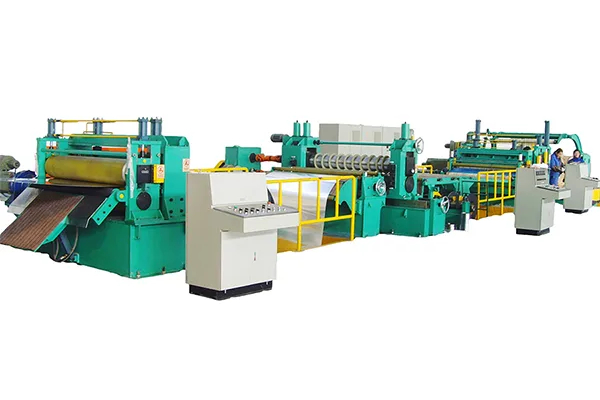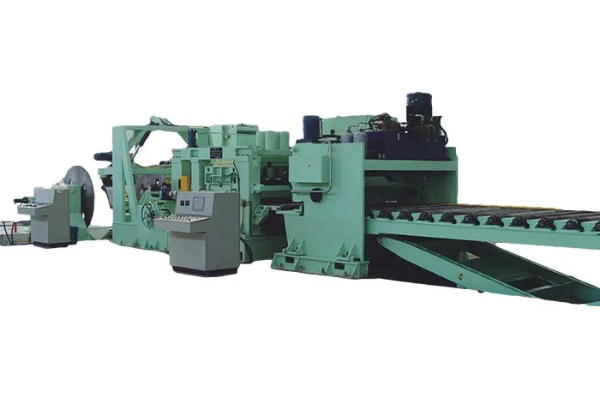
Troubleshooting Common Issues with Metal Plate Bending Machines
- By:Metmac
- 2024-07-18
- 196
Metal plate bending machines are essential in various industries, performing intricate bends and shapes on metal sheets. However, these machines can occasionally encounter issues that hinder their smooth operation. This article will delve into common problems faced with metal plate bending machines and provide comprehensive troubleshooting solutions.
Hydraulic System Issues
Oil Leaks
Oil leaks are one of the most common hydraulic system problems. Inspect the hoses, fittings, and seals for any damage or loose connections. Replace worn-out components and tighten loose connections.
Insufficient Pressure
Insufficient hydraulic pressure can prevent the machine from bending metal sheets effectively. Check the hydraulic pump and motor for proper operation. Ensure that the fluid level is adequate and replace any contaminated or degraded hydraulic fluid.
Electrical System Issues
Power Supply Faults
A faulty power supply can lead to intermittent machine operation or complete failure. Verify the electrical connections and ensure that the voltage and amperage requirements are compatible with the machine’s specifications. Check for any blown fuses or tripped circuit breakers.
Malfunctioning Sensors
Sensors are crucial for accurate bending operations. Calibrate or replace any malfunctioning sensors that detect sheet thickness, bending angle, or other critical parameters. Check the wiring and connections associated with the sensors.
Mechanical Issues
Misalignment of Bending Dies
Improper alignment of bending dies can result in uneven or inaccurate bends. Adjust the dies to ensure they are parallel and centered. Check the machine’s frame for any deformation or structural damage.
Insufficient Clamping Force
Inadequate clamping force can allow the metal sheet to slip during bending, leading to bending errors. Inspect the clamping mechanisms and ensure that they apply sufficient force to hold the sheet firmly in place.
Wear and Tear of Components
Over time, mechanical components such as gears, bearings, and shafts can wear out or become damaged. Inspect these components regularly and replace any worn or faulty parts to maintain optimal machine performance.
Other Issues
Material Quality
Poor material quality can contribute to bending issues. Ensure that the metal sheets used are of suitable thickness, strength, and ductility for the desired bending operations.
Inadequate Lubrication
Lack of lubrication can increase friction during bending, leading to premature wear and tear of mechanical components. Regularly lubricate all moving parts, including gears, shafts, and bearings.
Conclusion
Troubleshooting common issues with metal plate bending machines requires a systematic approach, addressing both hydraulic, electrical, and mechanical aspects. By following the troubleshooting guidelines outlined in this article, operators can efficiently identify and resolve problems, ensuring the smooth operation of their machines and minimizing downtime. Regular maintenance and preventative measures are crucial to extend the lifespan of these valuable tools.
-
Mastering Form and Force: A Guide to Modern Metal Plate Bending Machines
2025/12/16 -
Demystifying Sheet Metal Laser Cutting Machine Price: The METMAC Value Perspective
2025/12/16 -
Metal Sheet Machinery: The Engine of Modern Fabrication and the METMAC Advantage
2025/12/16 -
Beyond the Bend: The Power and Precision of the Modern Sheet Profile Machine
2025/12/16
-
Advanced Sheet Metal Rolling, Laser Cutting, and Folding Machines for Precision Fabrication
2025/10/31 -
High-Performance Sheet Metal Bending and Cutting Machines for Modern Fabrication
2025/10/31 -
High-Quality Sheet Metal Equipment for Sale: Efficient Solutions for Modern Manufacturing
2025/10/31 -
High-Performance Sheet Metal Equipment for Sale: Forming and Shearing Solutions for Modern Fabrication
2025/10/22
-
A Guide to the Latest Innovations in Sheet Metal Folding Machines
2024/11/29 -
Key Features to Consider When Investing in a Sheet Metal Folding Machine
2024/11/28 -
Enhancing Precision with Advanced Sheet Metal Folding Machines
2024/11/27 -
How to Choose the Right Sheet Metal Folding Machine for Your Workshop
2024/11/26







